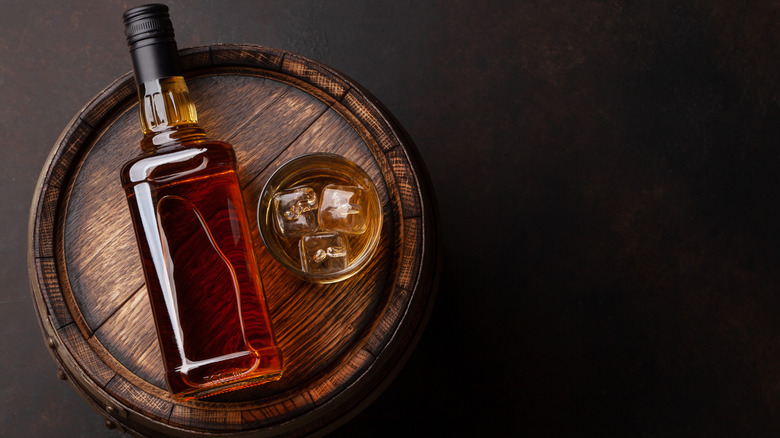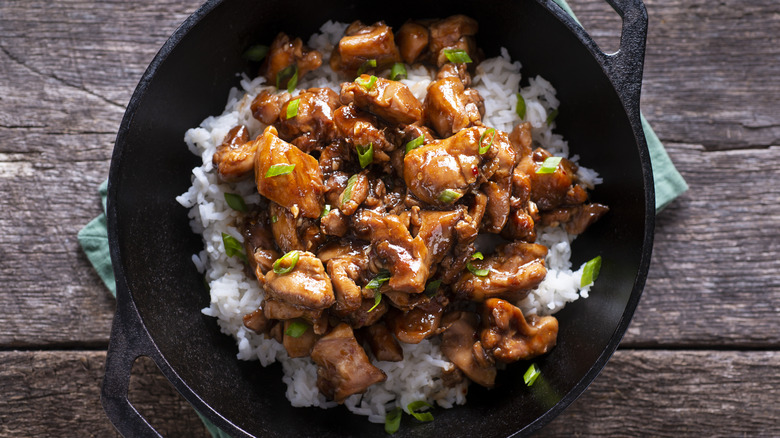When Choosing Which Bourbon To Cook With, Follow The Wine Rule
Bourbon is really having its moment right now. Increasingly popular, it's a delightful, all-American spirit that can be enjoyed straight up, on the rocks, or as part of a classic cocktail like a Manhattan, an Old Fashioned, or a Mint Julep, or more modern takes like a Revolver, a Kentucky Maid, or a Gold Rush. But it turns out, there are many ways to use bourbon beyond the cocktails — like wine, you can cook with bourbon as well.
In some ways, bourbon is an ideal alcohol to use for cooking. As food writer Lori Rice explained to The Alcohol Professor, "Bourbon has a depth of flavor that many spirits lack." Bourbon works great in glazes, marinades, rubs, sauces (especially dessert sauces), jams, and preserves, and pairs beautifully with meats of all kinds (which it also helps to tenderize, with the alcohol breaking down protein enzymes), as well as sweet dishes and dessert. So how exactly do you decide which bourbon to cook with?
What the wine rule means for cooking with bourbon
According to the Alcohol Professor, you should follow the wine rule when it comes to cooking with bourbon, namely, "don't cook with a bourbon that you wouldn't want to drink," noting that a cheap bourbon won't add much flavor beyond the taste of cheap alcohol. At the same time, you don't want to go too high end — since the alcohol typically burns off during the cooking process, it would be a huge waste of an expensive bottle (like the heavily sought-after Pappy Van Winkle or any of the ones on our list of the most expensive bottles of bourbon ever).
Instead, go for a mid-range bottle and pay attention to the underlying flavors of that particular bourbon and the dish you're planning to make. Bourbon is known for its smoky flavors and caramelized sweetness. Depending on the bourbon, there may also be additional notes of fruits, cooking spices, nuts, honey, and more. Some, like high-rye bourbons, have a spicier and peppery finish. The bourbon can work as both a complementary or contrasting flavor.
Also bear in mind that higher-proof bourbon will require a longer cooking time, given its higher alcohol content. Lower-proof bourbon (below 46% ABV) works better with lighter foods such as fish, seafood, vegetables, and desserts, while higher-proof bourbon is a natural pairing for heavier dishes with bolder flavors, particularly anything charred, fried, grilled, or smoked.

